Related Research Articles

Orléans is a city in north-central France, about 120 kilometres southwest of Paris. It is the prefecture of the department of Loiret and of the region of Centre-Val de Loire.

The Château de Chenonceau is a French château spanning the river Cher, near the small village of Chenonceaux, Indre-et-Loire, Centre-Val de Loire. It is one of the best-known châteaux of the Loire Valley.
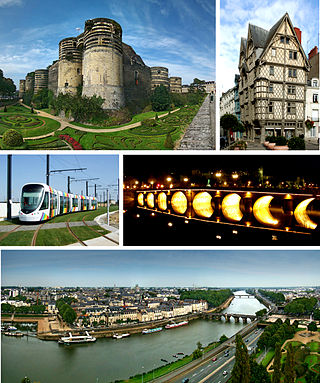
Angers is a city in western France, about 300 km (190 mi) southwest of Paris. It is the prefecture of the Maine-et-Loire department and was the capital of the province of Anjou until the French Revolution. The inhabitants of both the city and the province are called Angevins or, more rarely, Angeriens.

The Château de Montsoreau is a Flamboyant Gothic castle in the Loire Valley, directly built in the Loire riverbed. It is located in the market town of Montsoreau, in the Maine-et-Loire département of France, close to Saumur, Chinon, Fontevraud-l'Abbaye, and Candes-Saint-Martin. The Château de Montsoreau is situated at the confluence of two rivers, the Loire and the Vienne, and the meeting point of three historical regions: Anjou, Poitou, and Touraine. It is the only château of the Loire Valley built directly in the Loire riverbed.
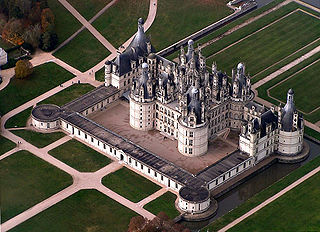
The Château de Chambord in Chambord, Centre-Val de Loire, France, is one of the most recognisable châteaux in the world because of its very distinctive French Renaissance architecture, which blends traditional French medieval forms with classical Renaissance structures. The building was constructed by the king of France, Francis I.
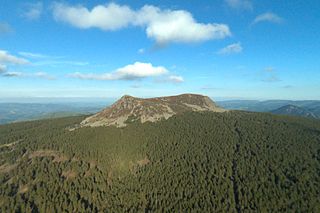
Haute-Loire is a landlocked department in the Auvergne-Rhône-Alpes region of south-central France. Named after the Loire River, it is surrounded by the departments of Loire, Ardèche, Lozère, Cantal and Puy-de-Dôme. In 2019, it had a population of 227,570; its inhabitants are called Altiligériens in French.
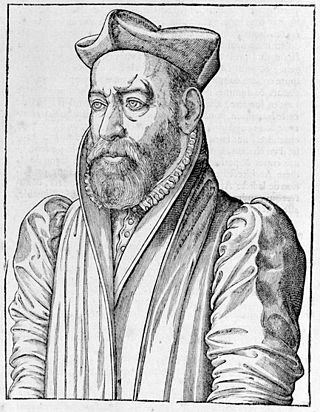
Philibert de l'Orme was a French architect and writer, and one of the great masters of French Renaissance architecture. His surname is also written De l'Orme, de L'Orme, or Delorme.

Jean-Baptiste Carrier was a French Revolutionary and politician most notable for his actions in the War in the Vendée during the Reign of Terror. While under orders to suppress a Royalist counter-revolution, he commanded the execution of 4,000 civilians, mainly priests, women and children in Nantes, some by drowning in the river Loire, which Carrier described as "the National Bathtub." After the fall of the Robespierre government, Carrier was tried for war crimes by the Revolutionary Tribunal, found guilty, and executed.

La Flèche is a town and commune in the French department of Sarthe, in the Pays de la Loire region in the Loire Valley. It is the sub-prefecture of the South-Sarthe, the chief district and the chief city of a canton, and the second most populous city of the department. The city is part of the Community of communes of the Pays La Flèche. The inhabitants of the town are called Fléchois.

Montsoreau is a commune of the Loire Valley in the Maine-et-Loire department in western France on the Loire, 160 km (99 mi) from the Atlantic coast and 250 km (160 mi) from Paris. The village is listed among The Most Beautiful Villages of France and is part of the Loire Valley UNESCO World Heritage Site.
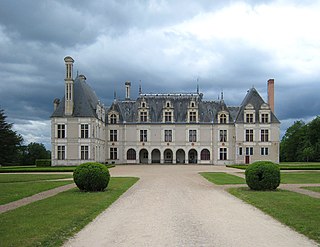
The Château de Beauregard is a Renaissance château in the Loire Valley in France. It is located on the territory of the commune of Cellettes, a little south of the city of Blois and a few miles from other famous Loire châteaux such as Cheverny. Although still inhabited, it can be visited by tourists. The château is renowned for its gallery of portraits decorated in the 17th century with 327 portraits of famous people.
Henry d'Andeli was a 13th-century Norman poet notable for his work La Bataille des Vins, and for the satirical poem Battle of the Seven Arts. He also wrote Dit du Chancelier Philippe on the subject of his contemporary Philip the Chancellor.

The Diocese of Orléans is a Latin Church diocese of the Catholic Church in France. The diocese currently corresponds to the Départment of Loiret. The current bishop is Jacques André Blaquart, who was appointed in 2010.

French Renaissance architecture is a style which was prominent between the late 15th and early 17th centuries in the Kingdom of France. It succeeded French Gothic architecture. The style was originally imported from Italy after the Hundred Years' War by the French kings Charles VII, Louis XI, Charles VIII, Louis XII and François I. Several notable royal châteaux in this style were built in the Loire Valley, notably the Château de Montsoreau, the Château de Langeais, the Château d'Amboise, the Château de Blois, the Château de Gaillon and the Château de Chambord, as well as, closer to Paris, the Château de Fontainebleau.

Saint-Germain-Laval is a commune in the Loire department in central France.

Château de Chinon is a château located on the bank of the river Vienne in Chinon, France. It was founded by Theobald I, Count of Blois. In the 11th century the castle became the property of the counts of Anjou. In 1156 Henry II of England, a member of the House of Anjou, took the castle from his brother Geoffrey, Count of Nantes, after Geoffrey rebelled for a second time. Henry favoured the Château de Chinon as a residence. Most of the standing structure can be attributed to his reign; he died there in 1189.

Gilles Clément, is a French gardener, garden designer, botanist, entomologist and writer. He is the author of several concepts in the framework of landscaping of the end of the twentieth century or the beginning of the twenty-first century, including in particular, 'moving garden', 'planetary garden' and 'third landscape'.
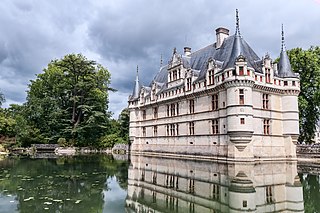
The Château d'Azay-le-Rideau is located in the town of Azay-le-Rideau in the French département of Indre-et-Loire. Built between 1518 and 1527, this château is considered one of the foremost examples of early French renaissance architecture. Set on an island in the middle of the Indre river, this picturesque château has become one of the most popular of the châteaux of the Loire valley.

Livradois-Forez Regional Natural Park is a regional natural park located on three French department : Puy-de-Dôme, Haute-Loire and Loire. The two biggest urban areas are Thiers and Ambert. Courpière, Billom and Vic-le-Comte have a secondary place in the territory.